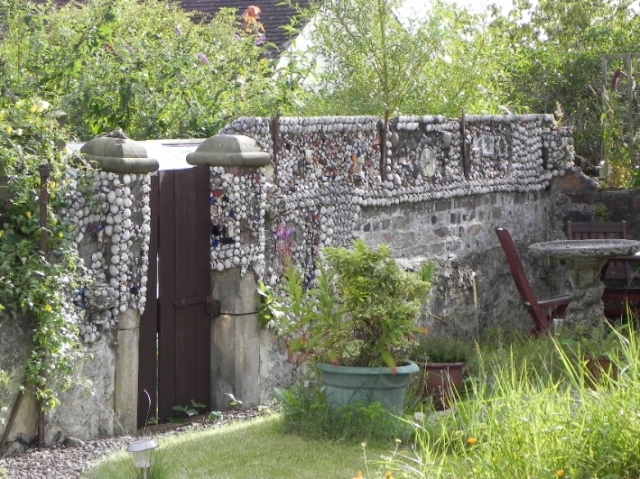 |
| this postcard and the next two from Facebook (page Scottish Beach Find) |
The above pictured shell decorated site, in the 1920s and 1930s a well-visited tourist attraction in the community of Leven, located along the east coast of Scotland, currently doesn't exist anymore.
Life and works
William R. Bisset (1869-1964), an inhabitant of the community, in the 1920s began decorating his house and the ornaments in his garden with shells. He also installed a small menagerie with some monkeys and other small animals.
In 1927 the site was opened to the public and it was quite a success: every summer in the 1930s some 30.000 people visited it.
After World War II, in the 1950s, the shell house and garden remained a tourist attraction.
In 1978 James Bisset died. The inheritors wanted to sell the property, but there was no interest in buying a house with a shell garden, so the site was "normalized" and on the premises a bungalow was built.
The house itself, on the corner of Seagate, near the Promenade is still extant, but just with a limited number of decorations.
Here is a picture via streetview
And another one from a website about making walking trips:
 |
picture from the website "The Airdrie Rambler" |
So, apart from the few decorations which have been left, a full view of this art environment will be available only on postcards.
And it is still in the memory of older people who in their youth happened to visit the site.
Documentation
Except pictures on Pinterest etc, the internet hasn't links to articles or comparable documentation about this site
Video
* Video by Scottish Mudlarking (June 2020, 14'19", YouTube), mainly about gathering shells at the beach, but starting at 11'25" scenes of currently (2020) still existing shell decorations
first published September 2009, last revised July 2020
* Video by Scottish Mudlarking (June 2020, 14'19", YouTube), mainly about gathering shells at the beach, but starting at 11'25" scenes of currently (2020) still existing shell decorations
Shell house
Leven, Scotland, UK
site doesn't exist anymore






















